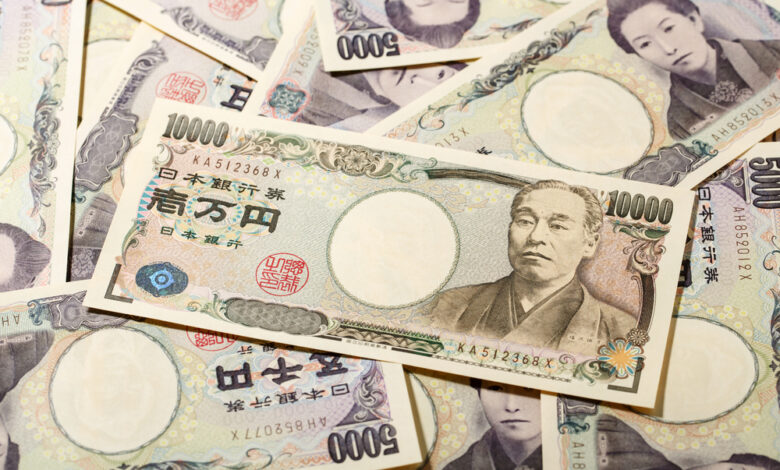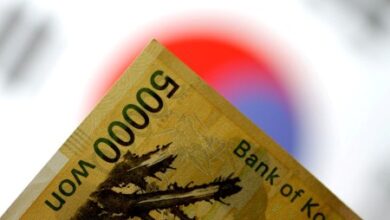Rethinking Japan: It Is Not About a Currency Crisis

Summary
- JPY has plummeted over the last two years despite Bank of Japan (BoJ) intervention.
- But fears of a Japanese currency and debt crisis are overblown: the BoJ owns about half the outstanding JGBs, while foreigners own only a fraction of Japanese debt.
- Japan has also one of the largest global net asset positions; a weakening currency improves domestic balance sheets.
- JPY weakness is a result of poor long-run fundamentals related to adverse demographics and slow productivity growth.
Misunderstanding Japan Again
Japan’s macroeconomics are often misunderstood. After its asset bubble collapsed in the early 1990s, Japan implemented unconventional monetary policies, including sustained low interest rates and aggressive large-scale asset purchases.
Contrary to widespread fears, these measures did not lead to runaway inflation – as Nobel laureate Paul Krugman correctly predicted in his liquidity trap paper. Instead, despite aggressive monetary expansion, inflation remained subdued and economic stagnation persisted. This caught many investors wrongfooted – and was a precursor to what many DMs experienced post-GFC.
So, are investors due to be wrongfooted again?
Many commentators proclaim again that Japan must experience an exchange rate and government debt crisis given JPY’s plummet. USD/JPY has gone from about 110 in late 2022 to 160 in recent weeks. The real effective exchange rate index declined by almost 25% over the same period, showing JPY is exhibiting broader weakness against a basket of currencies.
A weaker yen has major implications for Japan’s foreign trade position. The country is particularly reliant on food and energy imports. A weakening currency is causing import prices to surge, ultimately feeding into domestic inflation.
The JPY weakness coincided with a surge in food and energy prices in 2022 because of the Ukraine war. This caused a double-whammy for the Japanese terms of trade (the ratio of export to import prices), which declined by almost 25% in under two years.
Consequently, for the very first time in decades, domestic inflation has comfortably exceeded 2% since early 2022. And even core CPI has recently increased to over 2%, a value not seen since the early 1990s.
JPY Interventions and Domestic Debt
Rising inflation combined with a weak JPY has caused the Japanese government to intervene. However, while most other DM central banks hiked rapidly to combat inflation last year, the BoJ only hiked from -0.1% to the new range of 0 to 0.1% 0.0% in March. Instead, the BoJ intervened in the FX market in recent months (on behalf of the government), buying JPY with FX reserves to support the currency.
While the BoJ cannot use this strategy indefinitely because it depletes domestic reserves, it still holds over USD1tn of foreign currency deposits and securities. So, it will not run out soon.
As the BoJ has favoured FX intervention over hikes, commentators argue Japan’s debt position – over 220% of GDP – makes hiking impossible since it would bankrupt the government.
However, uniquely, the BoJ (effectively a government branch) owns about half Japan’s debt. And international investors hold only a small share of the country’s debt (under 15%). Japanese residents and financial institutions own most of the Japanese bonds. So, in a way, Japan owes the debt to itself.
Japan’s interest rate expenses remain comfortably below 2% of GDP, even as long-term yields in Japan have started to rise since 2020 just like everywhere else.
While increasing the policy rate will put some pressure on the government’s budget, Japan’s debt remains ‘affordable’ relative to most other advanced economies.
Being a Net Creditor to the World Is an Advantage
One main ingredient for a currency crisis is foreign-denominated debt, as with the Asian crisis in 1997. First, lots of ‘hot money’ – speculative investments – flowed into the region, leading to domestic credit and asset price booms. Second, and more importantly, corporations often borrowed in US dollars. When the currency pegs collapsed, corporate balance sheets deteriorated rapidly, forcing many companies into insolvency.
Japan has none of the aspects that would make for a currency crisis. Speculative flows are not surging. And Japanese corporations and residents do not borrow in foreign currency. Instead, Japan is one of the world’s largest creditors.
Japan’s net foreign assets stand at just under JPY500tn, over USD3tn (or around 80% of the country’s GDP). A weakening exchange rate actually improves Japan’s private sector balance sheets, making domestic residents wealthier because the value of their foreign assets increases (when measured in JPY).
Not that anyone wants the domestic currency to plunge, but the key ingredients for a currency crisis are missing.
Structural Factors Are Causing the JPY Weakness
Structural weaknesses can explain the long-run JPY decline, meaning BoJ interventions are insufficient keep the exchange rate from weakening further.
Japan has two main structural issues that have caused real incomes to grow more slowly than in other advanced economies. First, a rapidly ageing population has meant the Japanese labour force begun to shrink over a decade ago. By 2050, it is expected to decline by over 30% from 2010 levels.
Second, productivity growth has fallen behind that of other advanced economies. As a result, wages have stagnated for almost two decades.
Japan’s government must address the reasons for the underlying productivity stagnation. However, engineering a productivity growth spurt is tricky.
It could boost the workforce by accepting higher immigration. While previous governments (under Shinzo Abe) have tried, measures have fallen short. Japan’s labour force remains relatively insulated due to low immigration. It needs a much larger, continuous net inflow of foreign workers. This would also lead to higher economic growth and stop JPY’s secular decline. Currently, though, this looks unlikely to materialise.
What Should the BoJ and the Government Do?
The BoJ cannot prop up the currency forever, even with Japan’s massive international reserves. Given financial markets now believe US and UK rates will remain high for a long time, we can expect further JPY weakness unless the BoJ narrows the rate differential.
So, will the BoJ shift gear? Domestic inflation and domestic wages have approached or even exceeded the country’s inflation target, which could prompt policymakers to raise the policy rate slowly this year. This would support JPY much more than occasional currency interventions. Viresh has a full breakdown of the Macro Hive view on BoJ policy in 2024 and 2025 here.
In the long run, however, the country must address its structural weaknesses. Japan needs a plausible growth strategy to halt its population decline. It must also address the roots of its prolonged productivity weakness.
(The commentary contained in the above article does not constitute an offer or a solicitation, or a recommendation to implement or liquidate an investment or to carry out any other transaction. It should not be used as a basis for any investment decision or other decision. Any investment decision should be based on appropriate professional advice specific to your needs.)
Enter your email to read this Macro Hive Exclusive
OR
Already have a Macro Hive Prime account? Log in





